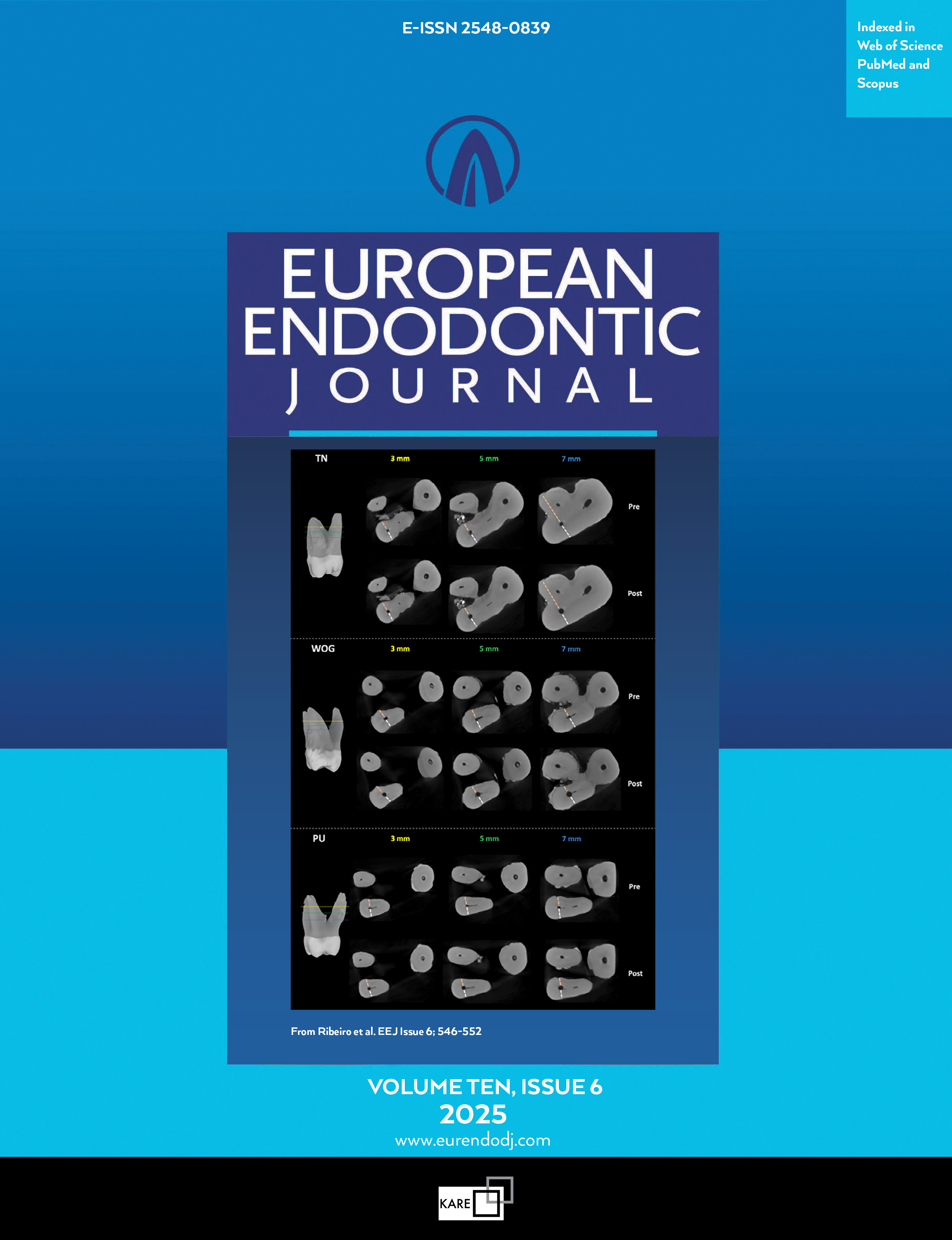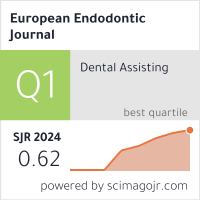Metrics
2024 IMPACT FACTOR
5 year Impact Factor
Eigenfactor Score
2024 CiteScore
Journal Citation Reports
(Clarivate 2025, JIF Rank)
Tooth Fracture and Associated Risk Factors in Permanent Molars Treated with Vital Pulp Therapy and Restored with Direct Resin Composites: A Retrospective Survival Analysis in Young Patients
Nattakan Chaipattanawan1, Papimon Chompu-inwai1, Chanika Manmontri1, Piriya Cherdsatirakul2, Areerat Nirunsittirat3, Phichayut Phinyo41Division of Pediatric Dentistry, Department of Orthodontics and Pediatric Dentistry, Chiang Mai University, Faculty of Dentistry, Chiang Mai, Thailand2Division of Operative Dentistry, Department of Restorative Dentistry and Periodontology, Chiang Mai University, Faculty of Dentistry, Chiang Mai, Thailand
3Division of Community Dentistry, Department of Family and Community Dentistry, Chiang Mai University, Faculty of Dentistry, Chiang Mai, Thailand
4Department of Family Medicine, Faculty of Medicine, Chiang Mai University, Chiang Mai, Thailand; Center for Clinical Epidemiology and Clinical Statistics, Faculty of Medicine, Chiang Mai University, Chiang Mai, Thailand; Musculoskeletal Science and Translational Research (MSTR) Cluster, Chiang Mai University, Chiang Mai, Thailand
Objective: This study aimed to evaluate the survival from fractures and risk factors of VPT-treated permanent molars restored with direct resin composites in young patients.
Methods: The dental records of patients aged 6 to 18 years with VPT-treated permanent molars restored with resin composites were retrospectively evaluated for the presence of fractures on these teeth. Kaplan-Meier methods were used to estimate the survival probabilities. The potential risk factors were assessed using the multivariable Cox proportional hazard model.
Results: A total of 234 treated molars from 189 patients were included. An overall average follow-up time was 33.34±20.54 months (ranging from 6 to 83 months). At the end of the study, 21.8% of molars had fractures with the majority of them (92.2%) were restorable. Radiographically, only 3.9% of the fractured molars had periapical lesions and considered VPT failures. The percentages of the fracture types are as follows: 54.9% natural tooth structure fracture, 27.5% restoration fracture, and 17.6% combination fracture. The most common fracture location among the 37 molars with natural tooth fracture (either alone or in combination with restoration fracture) was at the marginal ridge (59.5%), followed by the marginal ridge extending to cusp (21.6%), and the cusp itself (18.9%). The cumulative survival probabilities of these teeth decreased over time, reaching 66.02% (95% CI: 55.8974.36) after 5 years. VPT-treated molars in the mandible had a 2.1 times higher risk of fracture than those in the maxilla. Furthermore, the molars treated with partial and coronal pulpotomy had 2.4 times and 4.6 times higher risks of fracture when compared to those with indirect pulp capping, respectively.
Conclusion: In VPT-treated permanent molars in young patients, more fractures were seen in mandibular teeth and in teeth with pulp roof removal (partial and coronal pulpotomy). Clinicians should plan for proper restoration on these teeth. (EEJ-2022-08-097)
Keywords: Direct resin composite restorations, permanent molars, risk factors, survival from fracture, vital pulp therapy
Manuscript Language: English
(1193 downloaded)



